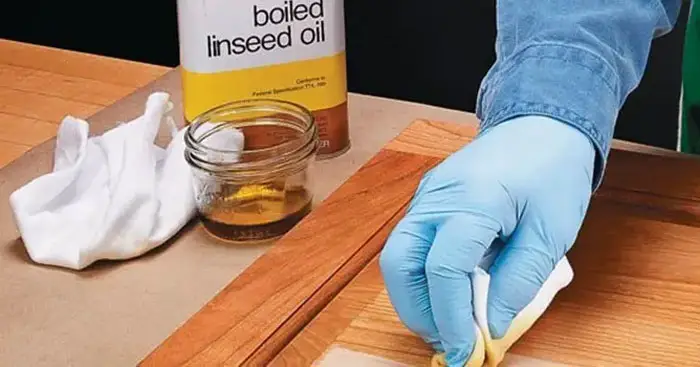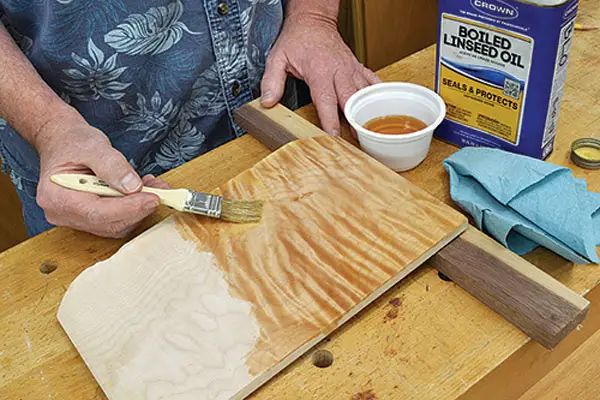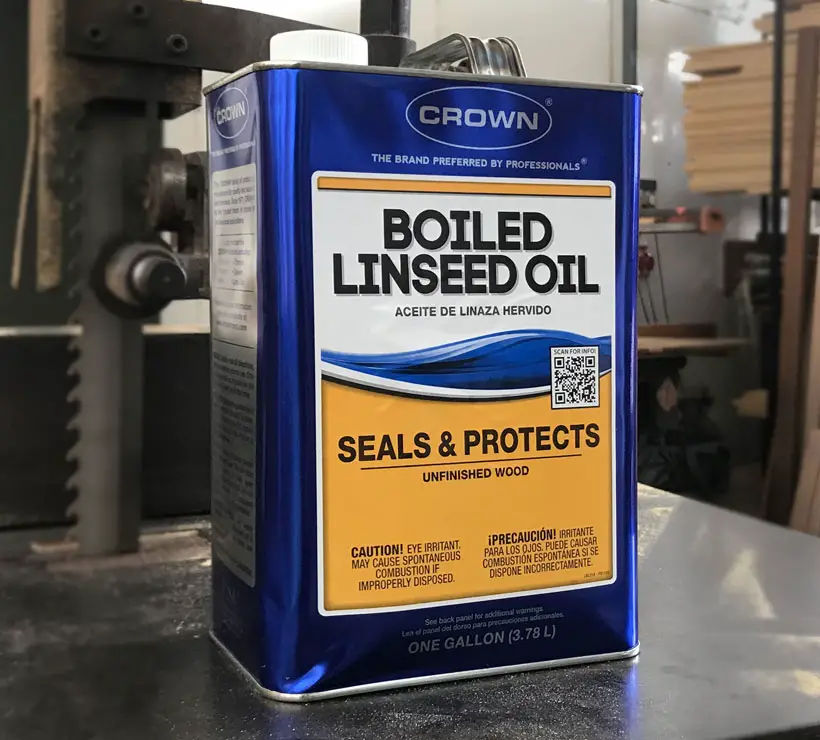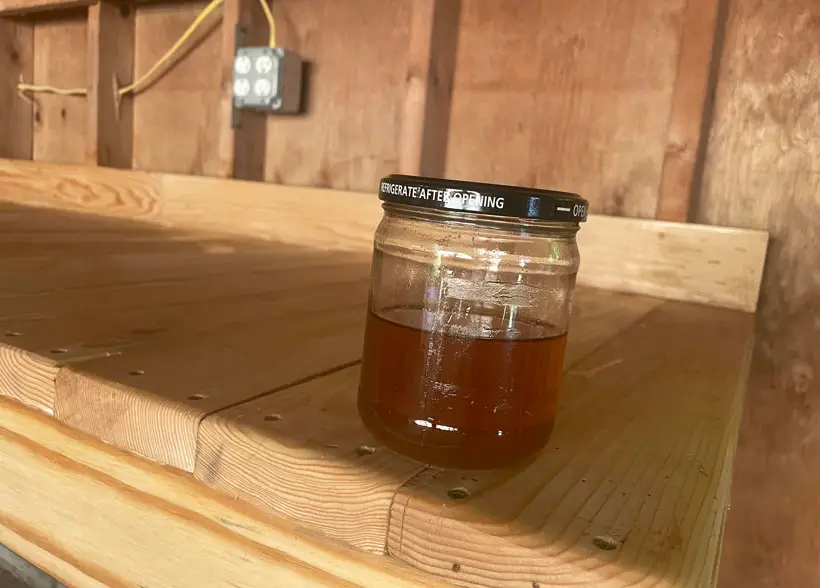Does Boiled Linseed Oil Go Bad? Factors That Affect Its Shelf Life
Boiled linseed oil contains additives, including metallic dryers and resins, that help it dry significantly faster when applied as wood finishing. This oil seals wood grain, repels water and insects, and protects the wood from UV rays.
But does boiled linseed oil go bad? Boiled linseed oil can go bad after some time, usually due to poor storage and exposure to various environmental factors. Besides, the additives in the oil decrease its overall shelf life since, with time, they break and become unstable.
This article intends to provide you with information on boiled linseed oil’s expiration and the duration it takes to go bad. Additionally, it discusses different factors that can influence its shelf life.
Does Boiled Linseed Oil Go Bad?
Boiled linseed oil is regular raw linseed oil with additives and treated with hot air. Treating doesn’t necessarily increase its quality but allows it to dry faster once applied. It’s also used in paints to bind the colors and add plasticity to a putty, thanks to its polymer-forming properties.

Unlike raw linseed oil, boiled linseed oil does go bad over time and has a shorter shelf life. For one, the additives used during the heating process break over time, allowing it to spoil faster.
Generally, the shelf life of linseed oil is four years, which is when best-before dates on the labels indicate. However, some labels indicate up to seven years, but if kept well can be more. However, various factors affect the shelf life of boiled linseed oil.
Factors That Decrease Boiled Linseed Oil’s Shelf Life?

As mentioned earlier, boiled linseed oil eventually goes bad and becomes unusable due to the additives used. However, besides this being the major factor of this wood oil spoiling, there are a few others. Other factors that may decrease the boiled linseed oil shelf life are as follows.
1. Exposure to air
Oxygen in the air can react with the boiled linseed oil, allowing it to go bad over time. The unsaturated fatty acids in the oil can become oxidized by the oxygen molecules in the air forming free radicals.
The color of the boiled linseed oil changes and becomes cloudy and discolored. The oil also develops a foul odor and a thick texture. Ensure the bottle or the container with the boiled linseed oil is tightly closed.
2. Exposure to light
Linseed oil can also go bad when exposed to light due to oxidation, just like when exposed to air. This wood oil can go bad through photo-oxidation as the light, usually ultraviolet, reacts with the unsaturated fatty acids.
It is best and advisable to keep the oil in its original bottle or container as they are less susceptible to UV penetration. Also, avoid leaving this oil open for a long time, which can cause it to lose effectiveness once used.
3. Amount of Oil in The Bottle
A low amount of oil in the bottle can also cause boiled linseed oil to go bad. With the oil low, the remaining space in the bottle is occupied by air, increasing the oxidation process. Also, low oil can dry and cure faster due to its thin layer.
It’s best not to keep boiled linseed oil in the bottle for long once you have used most of it.

4. Contamination
Contaminants like water and dirt can also cause the boiled linseed oil to spoil. Water increases oxidation, causing it to go rancid much faster and decreasing its shelf life. Dirt allows the formation of mold and bacteria in the oil, which can break it down and decrease its effectiveness.
Avoid contaminating the oil by dipping the applying tool, which can transfer contaminants from the wood to the oil.
5. Exposure to heat
Heat can also cause boiled linseed oil to go bad through thermal oxidation. The oil becomes more susceptible to reacting with oxygen molecules when exposed to heat. Besides that, the oil can polymerize precipitously due to heat, decreasing its effectiveness as varnish.
Keep the oil in a cool place, away from direct sunlight or near a heat source, to prevent it from going bad. Besides, boiled linseed oil is known to combust spontaneously and can cause a fire.
6. Manufacturing Defects
Though unlikely, boiled linseed oil can go bad due to manufacturing defects. The main causes are the heating process and the quality of resins used as additives.
Low-quality resins can decrease their durability once exposed to contaminants, heat, or air. Also, heating the oil for too long during manufacturing can make it unstable, allowing it to break faster.
How to Properly Store Boiled Linseed Oil?

As mentioned earlier, storage is crucial to prevent linseed oil from going bad. Following are some tips to help you store boiled linseed oil properly and for a long time.
- Use linseed oil’s original container for storage as they are usually airtight and resistant to environmental factors.
- If you don’t have the original container use an airtight metal container and write a label with information about the oil type and storage date.
- Ensure you tighten the container to prevent air from getting in causing the linseed oil to go rancid.
- Store the linseed oil in a cool and dry place away from drafts or direct sunlight. As mentioned above these elements can cause the oil to lose its effectiveness.
Related Questions
Following are the frequently asked question related to this topic
Q1. How Do I Know If Boiled Linseed Oil Is Bad?
The best way to learn whether boiled linseed oil is rancid is by checking the best-before date. You can also open the bottle and check the oil, it’s probably rancid if it has an unusual smell or color.
Q2. How Long Should Boiled Linseed Oil Last Before It Goes Bad?
Usually, each bottle of boiled linseed oil has a best-before date, after which the oil’s effectiveness starts deteriorating. This date can be between four to seven years but with proper storage can be more.
Q3. Should I Use Boiled Linseed Oil That’s Beyond Its Best-Before Date?
Usually, boiled linseed oil has a longer shelf life than that indicated on its label. The oil is usually usable if stored in an ideal place and not contaminated during use. However, first test it on a disposable wood block to check its effectiveness.
Outro
Like most products containing additives, boiled linseed oil can go bad over time and has a designated shelf life. However, its chances of going rancid and shelf life are more dependent on various environmental factors discussed in the article.
Store the linseed oil ideally to prevent it from going bad faster than expected. Also, ensure you use it correctly and per the user’s guidelines to avoid contaminants, which increases its chances of going bad.




